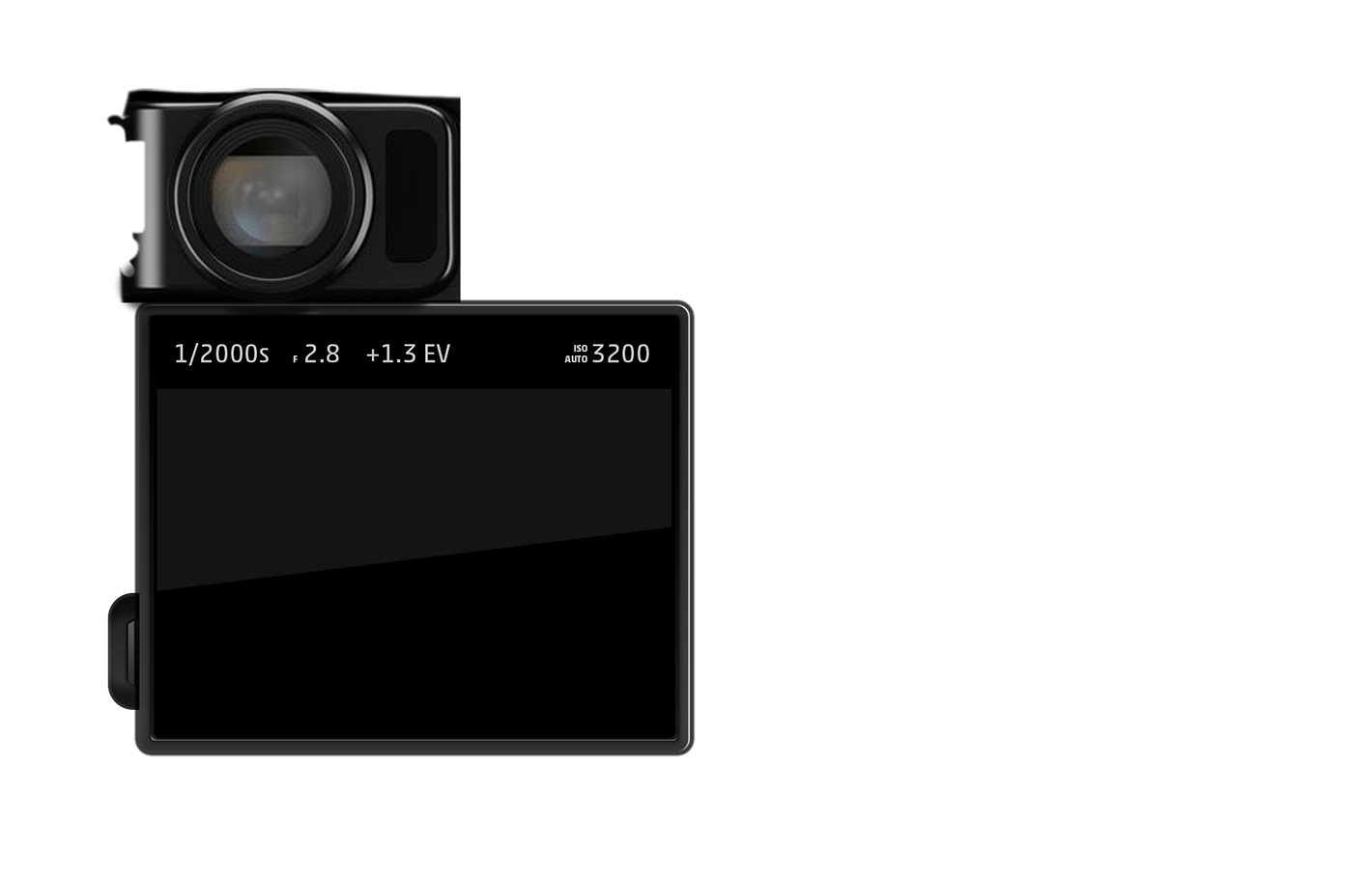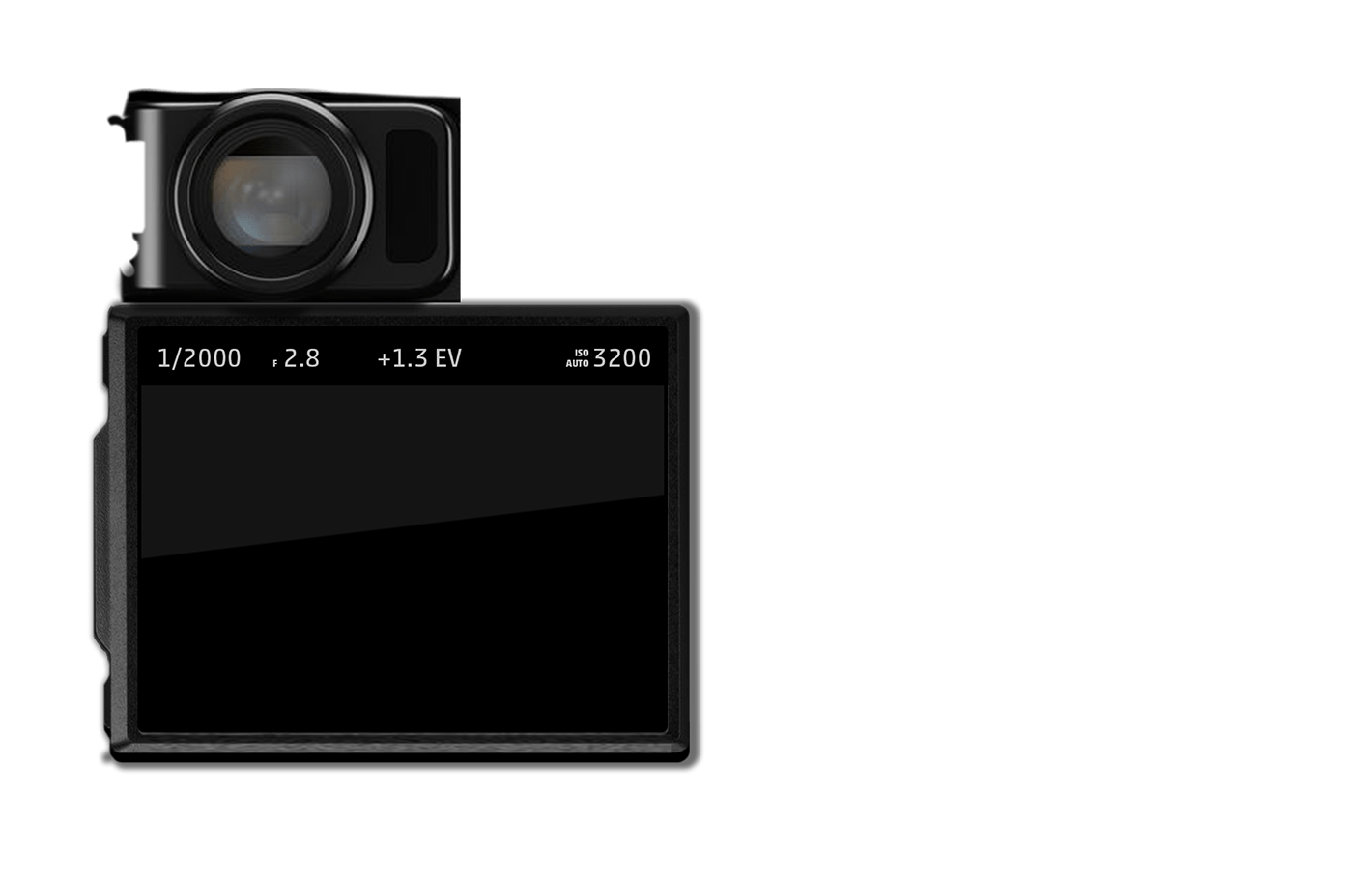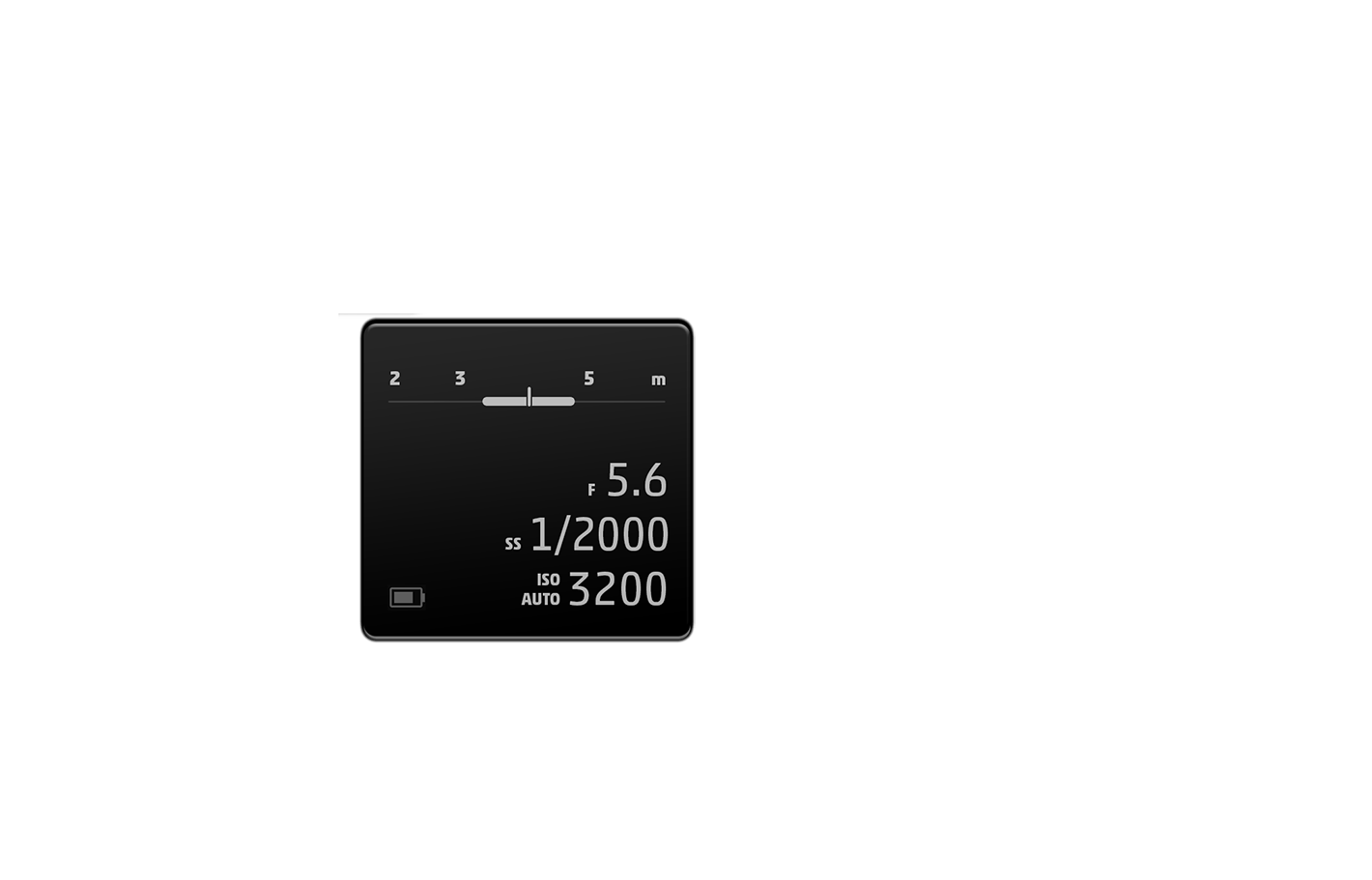Disclaimer: This is not how I typically approach product design. I just wanted to quickly get some (maybe naive) ideas out. It’s assumed that the reader knows a bit about photography and modern digital cameras.
What is perfect, anyway?
I don’t think there is a camera in existence that is perfect for everyone. But there are certainly cameras which, over the years, have demonstrated outstanding industrial and user interface design.
For some photographers, their perfect camera might be one of the Leica M-series, with a simple, classic manual rangefinder experience. For others, the DSLR form factor might be perfect with its large grip, presence and counterbalance to large lenses. Others might not need the complexity of interchangeable lenses, and would say a Ricoh GRIII, Fujifilm X100F, Leica Q or another fixed-lens camera matches their ideal. Others, an iPhone is perfect. The classification of “perfect camera” is very personal.

My favourite digital camera: Fujifilm X-Pro2.
When I read the design story of the X-Pro2 (written by Aage Granaas), I really wanted it to be my primary photography tool. And I’ve used this camera for over 3 years now. It balances a tactile, classic experience I’ve always loved when taking photos with a camera, while still offering modern functionality that helps me take beautiful images.
It’s not quite perfect. But to me it is the most perfect “almost-perfect” digital camera I’ve ever owned.
To Dream
This was just a fun project for me to get some thoughts down that have been ruminating for a while. Of course there’s a lot that would need to be pushed further to make any of this truly realistic (menu configurations, usability issues, UI consistency, part/mold design etc). But I’m thankful for you taking the time to read through this.
X-Pro3 - A Catalyst
I’ve chosen the X-Pro3 to use as a base camera to illustrate the ideas here. My hope is that the reader could imagine how these ideas could be applied to other interchangeable lens digital cameras.
Nonetheless, these are a set of features I think solve tangible problems yet to be solved by Fujifilm or any other modern digital camera maker. Maybe helping them to become a little bit “more perfect”.
Introducing an X-ProF Concept
01 External Focus Indication
To allow for effective zone focusing / Provide an external panel which is dedicated to displaying lens focus and hyperfocal distance.


Mini OLED Panel: Provides an important missing piece of information at-a-glance.
New technology can sometimes make certain things harder than they used to be.
An often used technique in street or documentary photography is to zone focus. Zone focusing is when a photographer manually sets the focus to a certain precalculated range, and allows them to capture moments without having to focus at the critical time. But in order to do this effectively, it is important to know what distance the lens is set to.
Classic manual lenses provide distance markings that display critical focus information at all times. But most mirrorless lenses (including Fujifilm’s lenses) are completely unmarked. Instead, focus distance information needs to be read in the viewfinder or LCD screen.
This solution would make focus information more accessible and would not require the photographer to look through the viewfinder to see it.
02 Dedicated Focus Touchpad
To allow for the direct selection of focus area while looking through the EVF or rear LCD / Provide a dedicated touch control pad which is highly responsive and keeps fingers off the screen (if there is one).

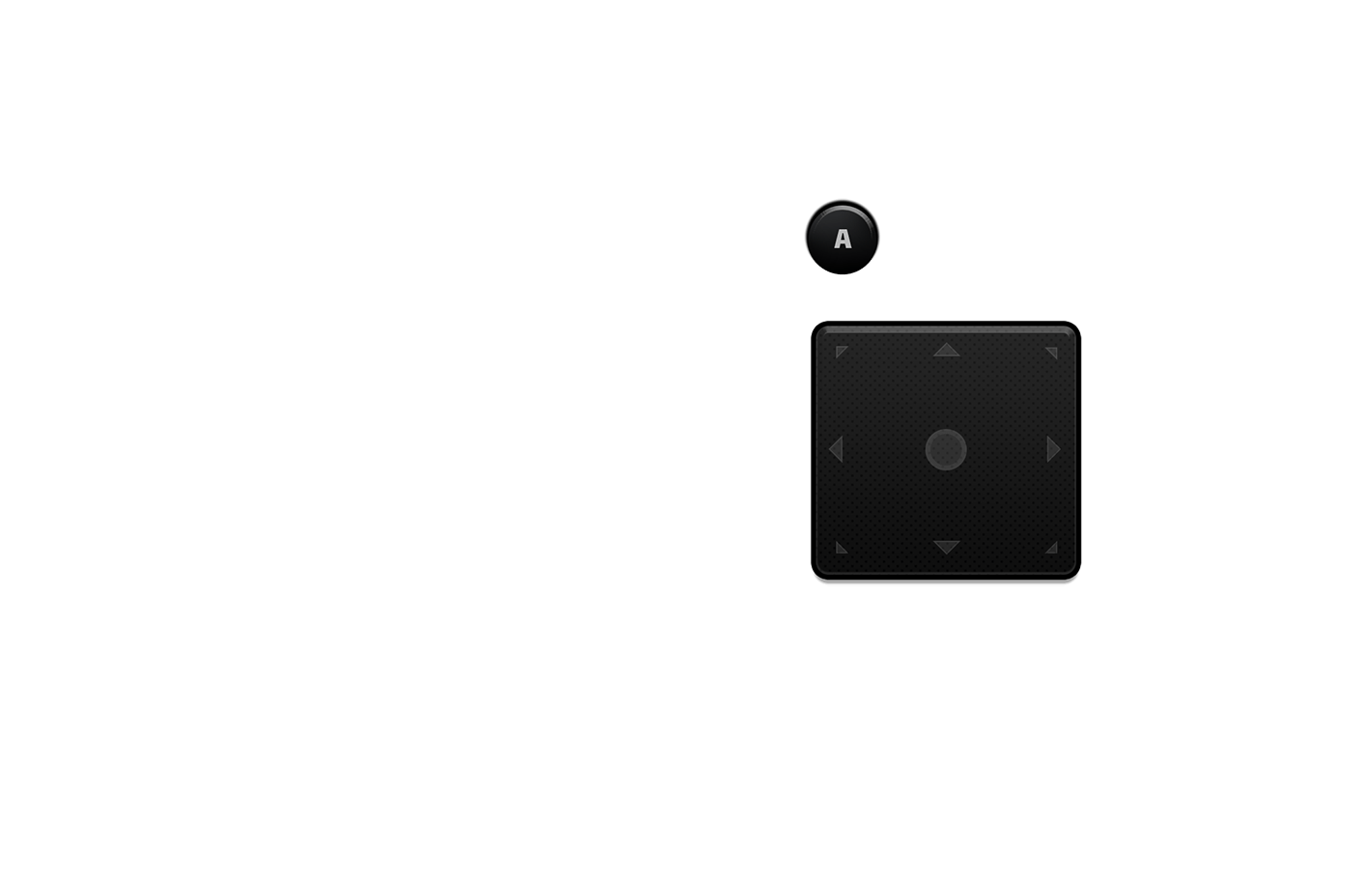
Some street photographers DO make consistent use of autofocus. However, composition and focus go hand in hand. And often times these need to be done in parallel. Fuji has used a focus selection joystick. But I’ve personally found this extremely slow and finicky to use. Particularly in scenarios where the desired composition requires precise focus at a point where the current focus point is not. You can see just how finicky and slow this is to use.
And some camera manufacturers allow for focus selection using the rear LCD as a touch pad, while looking through the viewfinder. This direct control can be incredibly efficient and very effective to select a focus point quickly while composing the shot. But, due to the position of the screen, this often can lead to mistaken input from the nose, or it can be awkward to reach the LCD with the thumb when looking through the viewfinder. Not to mention fingerprint smudges on the screen.
Instead, using a responsive touch pad set at the perfect ergonomic position would provide the best of all worlds, and would work with back-button-focus techniques as well.
Focus selection touch pad: Extremely fast and accessible focus point selection using touch.
Providing a dedicated touch pad allows the photographer to quickly move the focus point while looking through the viewfinder in an intuitive way. This touch pad could also be “clickable”, allowing fine-grain selection, menu navigation, and custom function mappings.
03 Modular Rear Screen and I/O
To allow for the varied use cases and needs of users / Provide an interchangeable modular screen system and a set of screen options that serve all possible photographer preferences.
Interchangeable rear screen: No need to complain if one of these is not for you, use the one you prefer the best.
Without fail, the rear screen layout for any newly released camera seems to be its most controversial feature. This may be due to the sheer amount of options which require some form of compromise, and the fact that there is no consensus by photographers and videographers on what is preferable for their use case. Everyone has an opinion on whether it should be a flippy screen, fixed screen, tilty-flippy screen, dual-axis-flippy screen or none of the above.
I think camera manufacturers could focus their efforts and unify their camera systems by modularizing the most contentious parts.
This would require some kind of connector system, which I fully admit I am glossing over a bit. I understand that this comes with incredible technical challenges, but considering the robustness of modern serial connectors and the already interchangeable nature of lenses, I have hopes that a company like Fujifilm could figure this out. :D
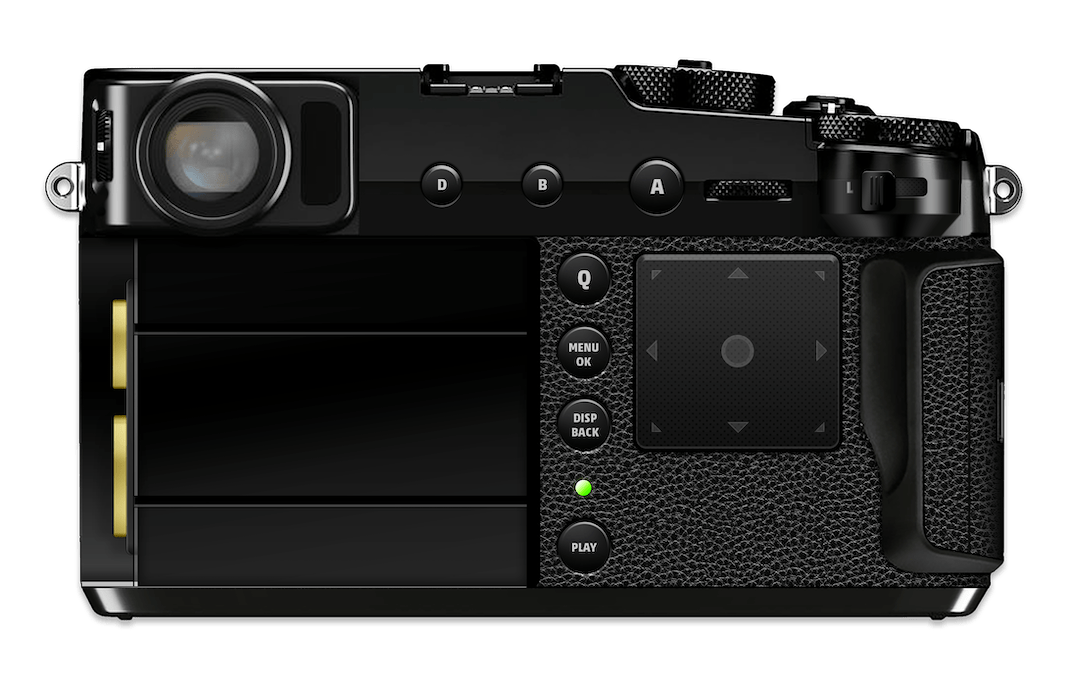
Connector interface: A naive example of what the underlying connectors might look like to facilitate multiple screens.
The LCD screen is one thing to modularize, but you could imagine the same for other extended functionality as part of this modularity, like I/O ports or battery attachments.


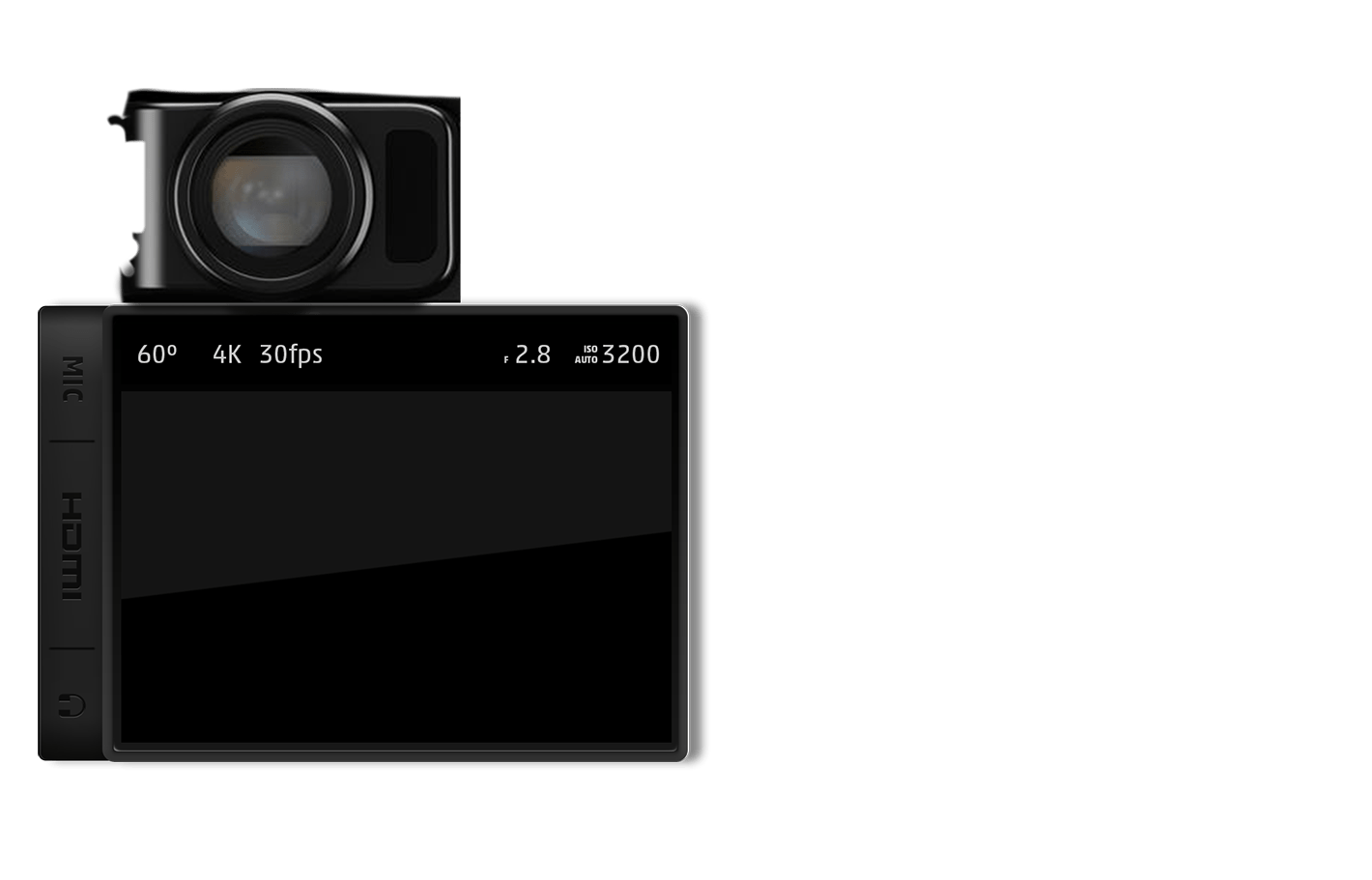
Video centric connectors: An example of using modularity to expose I/O for specific use cases.
04 Function Lock Switch
To allow for persistence in exposure and focus settings / Provide a physical switch that can lock settings without the need for the photographer to continually press it.


Physical lock: An easily switchable hardware lock. What could we use this for? …
Most modern digital cameras have an autofocus lock and/or an autoexposure lock button. These buttons can be very useful, but usually they require the photographer to hold it down. Or if it does “lock”, there is no indication that exposure is locked, except through the viewfinder or LCD.
Locking AF/AE: The hardware lock switch could persist focus settings, exposure settings or both (based on user preference). It would also necessarily prevent input from the focus touch pad.
I could imagine this simple switch could be configured to lock focus, exposure, and much more (toggling modes, presets, custom configurations etc.).
05 Layout & Aesthetics
This one is pretty X-Pro specific. I wanted to give some thought to labeling and play with textures and shapes. Building on the already well designed X-Pro3, I made some slight refinements to the layout and treatment of many fundamental components (labels, buttons, dials, grip, textures etc).
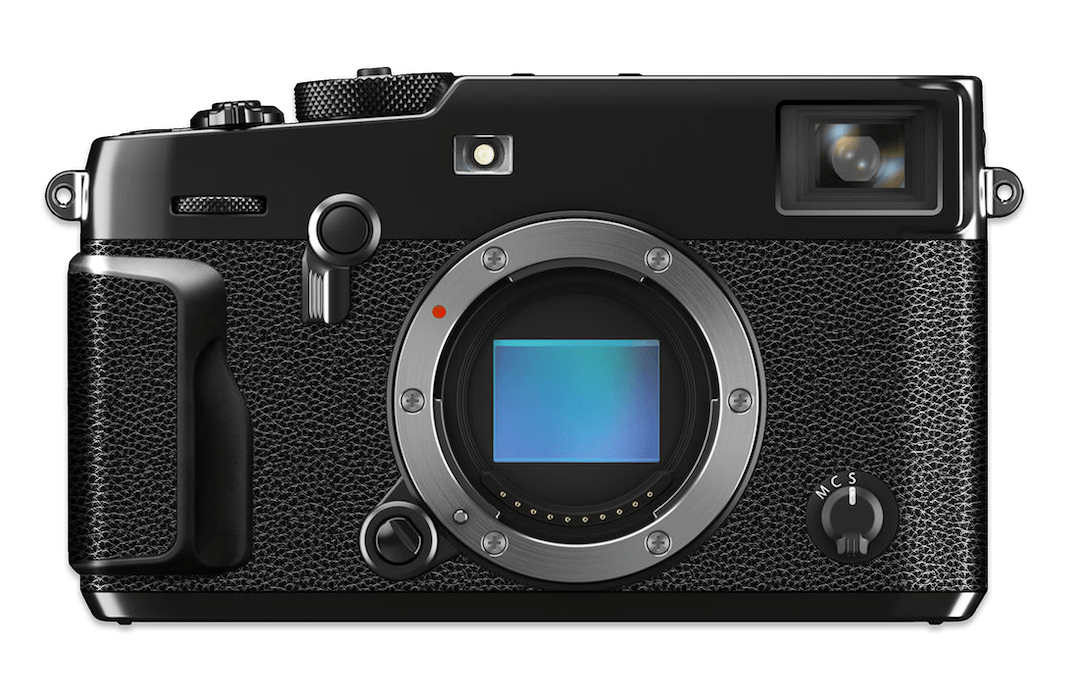
Small adjustments: Reviving the iconic grip, using a more refined leatherette and slight chamfers added for dimensionality.
I spent some time making slight adjustments to the top panel layout. Mostly adjusting alignment and reducing visual noise. I’ll leave it up to the inspired reader to investigate the small changes made from the X-Pro3 top panel.
Simplicity: Subtle labeling with thoughtful button and dial alignment.
The back panel is probably the most complicated component of any digital camera. I think it’s important to balance the access to powerful functions while also maintaining a feeling of approachability.
Buttons should always be labeled. However, particularly with digital cameras, buttons and dials can generally be customized to perform one of many functions. I attempted to keep labels on customizable controls non-specific yet still easily referred to even though what they do might change.


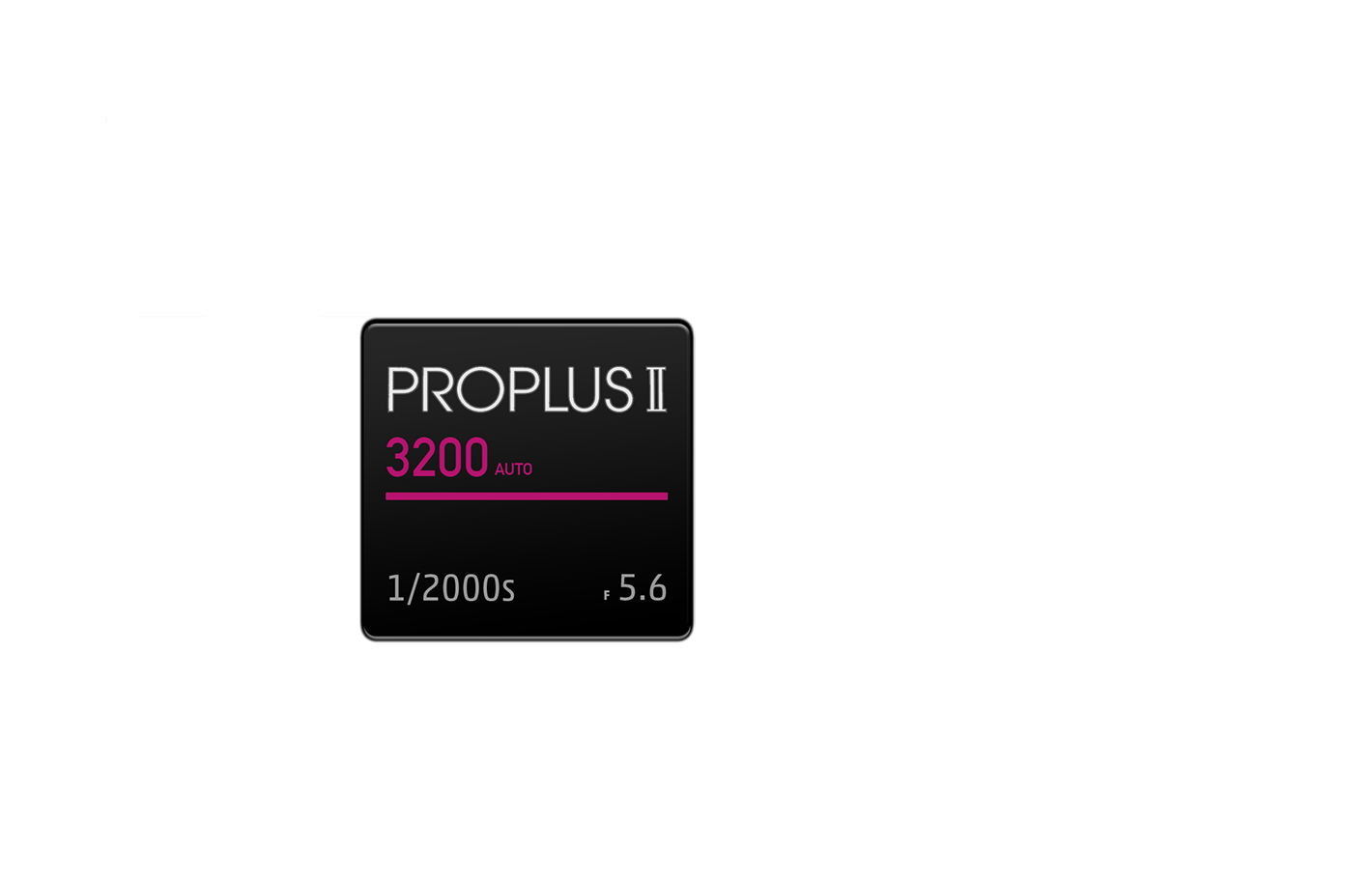
Clean but functional: Geometric layout is approachable, and indexed labeling allows powerful customization.
How about you?
What would your perfect camera be? Tell me what you think on twitter or by email. I’d love to hear from you.
